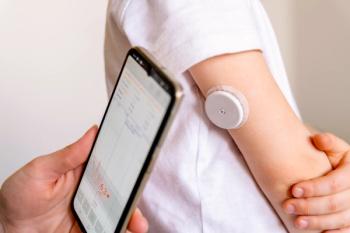
FDA Approves Acoltremon Ophthalmic Solution 0.003% for Signs, Symptoms of Dry Eye Disease
Key Takeaways
- Acoltremon ophthalmic solution 0.003% is a TRPM8 receptor agonist approved for dry eye disease, enhancing tear production by stimulating corneal nerves.
- Clinical trials showed significant improvements in tear production with acoltremon compared to placebo, with effects observed as early as day 1.
FDA approves acoltremon ophthalmic solution, a groundbreaking treatment for dry eye disease, enhancing natural tear production and patient quality of life.
FDA officials approved acoltremon ophthalmic solution 0.003% (Tryptyr; Alcon) for the treatment of signs and symptoms of dry eye disease (DED). The treatment is a first-in-class transient receptor potential melastatin 8 (TRPM8) receptor agonist that works by stimulating corneal sensory nerves to rapidly increase natural tear production.1
Dry Eye Disease
DED is a multifactorial condition characterized by a deficiency in natural tears due to either decreased tear production or increased tear evaporation. Common treatment options for DED have limitations such as slow onset, patient dissatisfaction, and poor adherence, with just 13% of surveyed patients with DED feeling that their condition was well-managed, according to one study.2,3
DED can significantly impact patients’ daily lives, with 56% of survey respondents saying it has a negative impact on their ability to drive at night, 42% saying it negatively impacts their ability to read, 34% saying it affects their ability to use a computer, and 24% saying it impacts their ability to watch TV.3
Patients also frequently report using various treatment options with little success. This can be driven by the lack of a single test to diagnose the condition, the varying symptoms, lack of physician understanding, and challenges rating the severity. Patients also report trying home remedies, such as drinking more water, limiting digital screen time, and thoroughly removing makeup.3 All of these challenges highlight the need for more accessible, effective treatments.
Clinical Data Supporting the Approval
The FDA approval of acoltremon ophthalmic solution 0.0003% is supported by 2 phase 3 clinical trials with more than 930 participants with a history of DED randomized 1:1 to either the solution or vehicle. In the COMET-2 and COMET-3 trials, up to 4 times more patients in the acoltremon arm experienced at least a 10 mm increase in natural tear production at day 14 compared to vehicle (42.6% vs 8.2% in COMET-2; 53.2% vs 14.4% in COMET-3). Consistent findings were observed at all timepoints through day 90, and treatment with acoltremon demonstrated statistically significant natural tear production as early as day 1.1
“Many of my patients continue to face frustrating challenges with dry eye management, and there is a clear need for additional treatment options,” said Marjan Farid, MD, a professor of ophthalmology at the University of California, Irvine, in a news release. “Tryptyr is the first eye drop that stimulates corneal nerves to directly address tear deficiency, a known cause of dry eye disease.”1
Animal studies have suggested that acoltremon is an agonist of TRPM8 thermoreceptors. Stimulation of TRPM8 thermoreceptors has been shown to activate trigeminal nerve signaling, resulting in increased basal tear production.1
Patient Counseling
Pharmacists can empower patients with DED to effectively manage their condition, especially with the introduction of novel therapies such as acoltremon ophthalmic solution 0.0003%. Beyond simply dispensing the medication, pharmacists serve as accessible health care educators. Patients should be counseled on the proper instillation technique of the drops, emphasizing crucial steps such as hand washing before use, avoiding contamination of the vial tip, and waiting 15 minutes to reinsert contact lenses if worn. Given that common adverse reactions for acoltremon ophthalmic solution 0.0003% include instillation site pain,1 pharmacists can proactively set patient expectations, offer reassurance, and provide tips to manage discomfort, thereby enhancing adherence and overall treatment success.
Furthermore, pharmacists are essential in integrating acoltremon ophthalmic solution 0.0003% into a patient’s broader dry eye management plan. This involves discussing its mechanism of action as a TRPM8 receptor agonist that rapidly stimulates natural tear production, highlighting its potential for quicker symptom relief compared to some existing treatments. They can also reinforce lifestyle modifications, such as managing environmental factors, reducing screen time, and considering omega-3 supplementation, which complement pharmacological therapy.
By providing comprehensive counseling, addressing patient concerns, and identifying potential drug interactions or contraindications, pharmacists can help optimize the therapeutic benefits of acoltremon ophthalmic solution 0.0003% and significantly contribute to improved quality of life for individuals with DED.
REFERENCES
1. Alcon Announces FDA Approval of Tryptyr (acoltremon ophthalmic solution) 0.003% for the Treatment of the Signs and Symptoms of Dry Eye Disease. News release. BusinessWire. May 28, 2025. Accessed May 28, 2025. https://www.businesswire.com/news/home/20250526865142/en/Alcon-Announces-FDA-Approval-of-TRYPTYR-acoltremon-ophthalmic-solution-0.003-for-the-Treatment-of-the-Signs-and-Symptoms-of-Dry-Eye-Disease
2. Boyd K. What Is Dry Eye? Symptoms, Causes and Treatment. American Academy of Ophthalmology. October 15, 2024. Accessed May 28, 2025. https://www.aao.org/eye-health/diseases/what-is-dry-eye
3. 2021 in America Survey Findings: Living With Chronic Dry Eye. Chronic Dry Eye. Updated August 10, 2021. Accessed May 28, 2025. https://chronicdryeye.net/infographic/in-america-findings
Newsletter
Stay informed on drug updates, treatment guidelines, and pharmacy practice trends—subscribe to Pharmacy Times for weekly clinical insights.




















































































































































































































